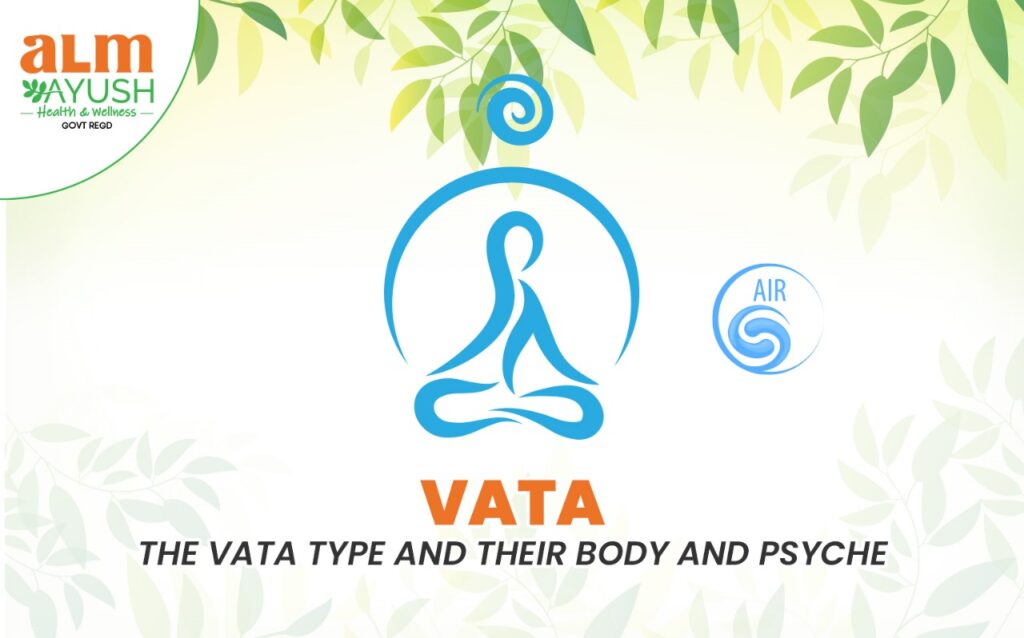VATA

- Vata possess vitality and governs all movement processes at a microcellular and macroscopic level like blinking of eyelids, movements of all muscles.
- Vata travels throughout the body.
- It is also responsible for circulation, respiration and the nervous system.
- Vata is the king of the doshas.
- If Vata is in equilibrium, then Pitta and Kapha works harmoniously.
- Vata is the foundation of our sense of well-being, which is why keeping this dosha in balance is so vital.
- The Vata type is constitution of space and air.
THE VATA TYPE AND THEIR BODY AND PSYCHE:
- Vata constitution have a delicate bone structure and do not carry much weight.
- Skin tends to be dry and rough.
- They are physically very active.
- Appetite and digestion are variable.
- Vata types prefer sweet, sour and salty foods.
- They frequently suffer from cold hands and feet.
- Vata types are exceptionally creative, communicative and brimming with ideas.
- Learns and acts quickly.
- Good short-term memory, poor long-term memory.
- Artistic and musical interests.
- Anxious, insecure, avoids conflict, has feelings of guilt, poor at decision-making, impulsive, often a loner.
- Forgives quickly.
- Positive: levity, cheerfulness and alertness, clarity and creativity.
- Negative: fear, sorrow, sadness, insecurity, depression.
WHAT HAPPENS IN THE EVENT OF VATA DISORDERS?
- Vata is localized in the lower part of the body, example in the large intestine, the pelvic area, and the knees.
- If there is an excess build-up of Vata in the body, it collects in these areas and result in anxiety, insomnia and flatulence and other clinical ailments. Example: osteoporosis, hip joint pain, knee joint pain, reduced immunity etc.
HOW TO CONTROL VATA?
- By proper diet and healthy lifestyle one can maintain the balance of three doshas.
- There are numerous treatments and medications in Ayurveda to subside vitiated Vata and other doshas.
